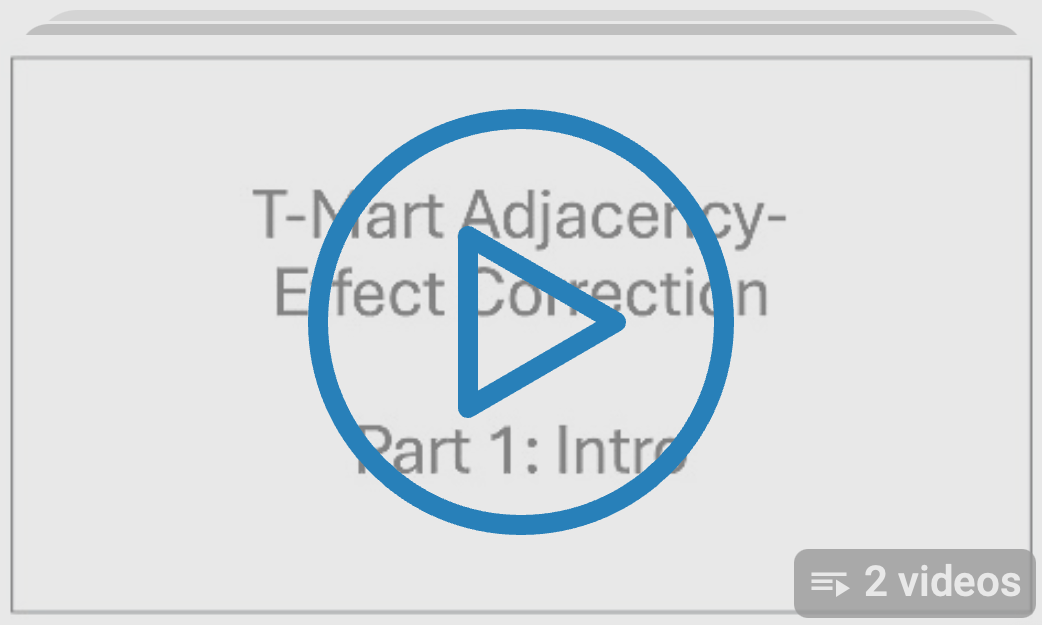Instruction - Adjacency-Effect Correction
Mininum input
The AEC.run function is used to perform adjacency-effect correction (AEC) in T-Mart. Correction is performed directly on level-1 products, and the output is adjacency-effect-free top-of-atmosphere products in the same format as the input level-1 products, therefore this workflow can be followed by any amtospheric correction tools. Currently it supports Sentinel-2 MSI, Landsat 8/9 OLI/OLI-2 and PRISMA imagery.
NASA EarthData credentials are needed to retrieve ozone, water vapour, and aerosol optical thickness and composition for accurate AEC. You may need to approve OB.DAAC Data Access in your EarthData account: click Authorized Apps under the Applications tab - click the APPROVE MORE APPLICATIONS button near the bottom, and authorize OB.DAAC Data Access.
Minimum input to the AEC.run function includes a path to satellite files and EarthData credentials. See AEC.run Function for all the arguments.
import tmart
file = 'user/test/S2A_MSIL1C_20160812T143752_N0204_R096_T20MKB_20160812T143749.SAFE'
username = 'abcdef'
password = '123456'
# T-Mart uses multiprocessing, which must be wrapped in 'if __name__ == "__main__":' for Windows users. This is optional for Unix-based systems
if __name__ == "__main__":
tmart.AEC.run(file, username, password)
Overwrite existing files
By default, the processing creates a copy of the original satellite files in the same directory, in a new folder named ‘AEC_*’. To overwrite the eixsting files, add ‘overwrite=True’ to the arguments:
tmart.AEC.run(file, username, password, overwrite=True)
Ancillary and log files
During the AEC process, a number of files are generated:
tmart_log_*.txt: detailed processing information, as printed in the Python console.
tmart_atm_info_*.txt: atmosphere and aerosol information used in the processing. This includes aerosol type, angstrom exponent, single scattering albedo, AOT at 550 nm, total column ozone, and total precipitable water vapour.
tmart_ancillary/*.nc: GMAO MERRA2 ancillary files from the NASA Ocean Biology Processing Group.
tmart_completed.txt: a record of bands that have been corrected for the adjacency effect.
tmart_preview.txt: a image preview of pixels identified as water (only run when
AE_landis False).
AEC configuration
A TXT configuration file is stored in the tmart package folder. Its path is printed in the Python console and the log file. Brief descriptions are given in the file. Most of the configuration settings are tuned for best performance.
By default, T-Mart identifies water pixels and only modify their values, leaving land pixel values unchanged to facilitate the existing calibration of atmospheric correction processors that extract information from land pixels. In case a significant number of water pixels are falsely masked as land, the mask_SWIR_threshold (the reflectance threshold in a SWIR band used to mask non-water pixels; default value: 0.03) can be increased based on the water pixel values in the scene. Modifying mask_SWIR_threshold in the AEC.run function overwrites the value in config.txt. Alternatively, setting AE_land to True enables AEC across the entire scene.
Additional arguments
AOT and n_photon can be specified manually. AOT is the aerosol optical thickness at 550 nm, you can specify it if you are certain about its value or simply to test the impact of using different values. n_photon is the number of photons used in each T-Mart run; the default value of 100,000 is recommended for accurate results. It can be reduced to 10,000 for quicker computation.
tmart.AEC.run(file, username, password, overwrite=True, AOT = 0.05, n_photon = 10_000)
Assumptions in AEC
A few assumptions are made in the processing, violations can lead to various degrees of errors in the output AE-free product:
Isotropic/Lambertian surface
Vertically stratified but horizontally homogeneous atmospheric molecules and aerosols across the scene
Flat surface or lack of topography
See AEC.run Function for all the arguments.
PRISMA image processing
T-Mart supports AE correction for ACOLITE-generated L1R PRISMA files. The modified L1R files from T-Mart can then be reprocessed in ACOLITE for atmospheric correction.
